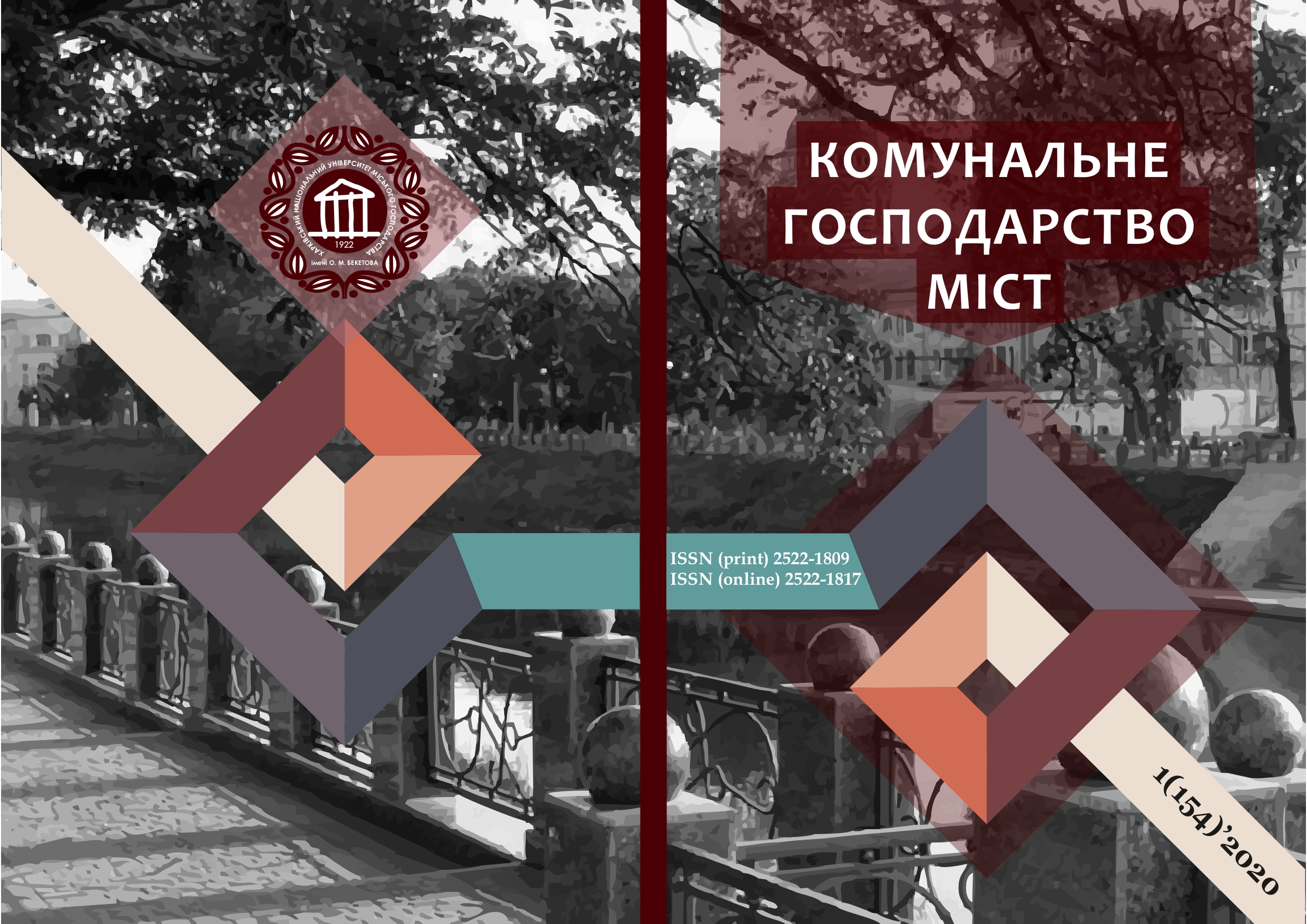РОЗРОБКА МЕТОДОЛОГІЧНОГО ПІДХОДУ ПРИ РОЗРОБЦІ БАКТЕРИЦИДНИХ ПОЛИВ ДЛЯ КЕРАМІЧНИХ ПЛИТОК
Array
Ключові слова:
поливи, керамічні матеріали, бактерицидні агенти, патогенні мікроорганізмиАнотація
В статті наведено аналіз ефективних методів забезпечення захисту навколишнього середовища від мікробного навантаження шляхом створення екологічно безпечних бактерицидних керамічних матеріалів. Визначена ефективність використання оксидів важких металів як бактерицидних агентів у складі полив для керамічних плиток. Розроблено методологічний підхід, який дозволяє одержати бактерицидні поливи для керамічних плиток з пролонгованою дією в умовах епідеміологічної загрози.
Посилання
Savvova, O.V., & Bragina, L.L. (2010) Antibacterial composite glass coatings for protecting special-purpose steel panels. Glass and Ceramics, 3, 4, 123-125.
Lysak, V.V.(2007). Microbiologia [Microbiology]. Minsk: BSU [in Russian].
Erofeev, V.T., Bogatov, A. D., Bogatova, S. N, & et.al. (2008) Stroitel`ny`e materialy` na osnove stekla [Glass-based building materials]. Bulletin of the Mordovian University, 3, 70-79 [in Russian].
Svetlov, D.A. (2005), Bioczidny`e preparaty` na osnove proizvodny`kh poligeksametilen-guanidina [Biocidal preparations based on polyhexamethylene-guanidine derivatives]. Zhizn` i bezopasnost` − Life and safety, 3, 46-48 [in Russian].
Kotz, L.S., Fedorenko, E.Yu., & Lesnykh, N.F. (2018) Sovremenny`e metody` diagnostiki i tekhnologicheskie princzipy` polucheniya biostojkikh keramicheskikh materialov [Modern diagnostic methods and technological principles for producing biostable ceramic materials]. Voprosy` khimii i khimicheskoj tekhnologii − Chemistry and chemical technology issues, 1, 78-86 [in Russian].
Aleksandrova, K.V., Shkoda, O.S., & Vasilyev, D.A. (2015) Viznachennya aktivnosti` fermenti`v v bi`ologi`chnikh seredovishhakh. Odiniczi` aktivnosti` fermenti`v. Enzimopati`yi. Medichna enzimologi`ya [Determination of enzyme activity in biological media. Units of activity of enzymes. Enzymopathy. Medical enzymology]. Zaporozhye: ZDMU [in Russian].
Biocera-nano-silver. https://www.biocera.com Retrieved from: https://www.biocera.com/antimicrobial-biocera-nano-silver-agent.
Silverzanit-Antibacterial ceramics. https://www.zahna-fliesen.de. Retrieved from: https://www.zahna-fliesen.de.
Advanced material. Technical Report. Properties of Antibacterial Additive for Pottery. https://www.soc.co.jp. Retrieved from: https://www.soc.co.jp/sumitomo_e/
Hasmaliza, M., Fooa, H.S., Mohd, K., Hasmaliza, M., & et al. (2016) Anatase as Antibacterial Material in Ceramic Tiles Procedia Chemistry , 19, 828-834.
Qian Zhang, Lv Si Xu, Xiaoyan Guo. (2017). Improvement of mechanical properties, microscopic structures, and antibacterial activity by Ag/ZnO nanocomposite powder for glaze-decorated ceramic. Journal of Advanced Ceramics, 6, 3, 269-278.
Savvova, O.V., & Bragina, L.L. (2010). Use of titanium dioxide for the development of antibacterial glass enamel coatings. Glass and Ceramics, 5, 6, 184-186.
Savvova, O.V. (2014). Effect of Zinc and tin Oxides on the Bactericidal Properties of Glass Enamel Coatings. Glass and Ceramics, 71, 7-8, 254-257.
Metodicheskie ukazaniya. Sanitarno-gigienicheskaya oczenka strojmaterialov s dobavleniem promotkhodov. [Methodical instructions. Sanitary and hygienic assessment of building materials with the addition of industrial waste]. (1998). Moscow: Standart [in Russian].
Fine ceramics (advanced ceramics, advanced technical ceramics) − Test method for antibacterial activity of semiconducting photocatalytic materials ISO 27447:2009. (2009). https://www.iso.org. Retrieved from: https://www.iso.org.
Plitki keramichni. Tekhnichni umovi [Ceramic tiles. Technological mind]. (2012). EN 14411:2006, NEQ: DSTU B.2.7-282:2011. Kiev: National Standard of Ukraine [in Ukrainian].
Edinaya sistema zashhity ot korrozii i stareniya. Izdeliya tekhnicheskie. Metody ispytanij. Materialy polimernye i ikh komponenty. Metody laboratornykh ispytanij na stojkost k vozdejstviyu plesnevykh gribov [Unified system of corrosion and ageing protection. Polymer materials and their components. Methods of laboratory tests for mould resistance]. (1991). ISO 846-78: HOST 9.049-91. Moscow: Standart [in Russian].
Standard test method for determining the antimicrobial activity of immobilized antimicrobial agents: ASTM E2149-13a. (2001). https://www.astm.org. Retrieved from: https://www.astm.org/Standards/E2149.htm.
Standard test method for quantification of a Pseudomonas Aeruginosa biofilm grown with shear and continuous flow using a rotating disk reactor: ASTM Е 2562-19. (2002). https://www.astm.org. Retrieved from: https://www.astm.org/Standards/E2871.htm.
Pekhtasheva, E.A. (2002) Biopovrezhdeniya i zashhita neprodovol`stvenny`kh tovarov [Biodeterioration and protection of non-food products]. Moscow: Masterstvo [in Russian].
##submission.downloads##
Опубліковано
Як цитувати
Номер
Розділ
Ліцензія
Автори, які публікуються у цьому збірнику, погоджуються з наступними умовами:
- Автори залишають за собою право на авторство своєї роботи та передають журналу право першої публікації цієї роботи на умовах ліцензії CC BY-NC-ND 4.0 (із Зазначенням Авторства – Некомерційна – Без Похідних 4.0 Міжнародна), котра дозволяє іншим особам вільно розповсюджувати опубліковану роботу з обов'язковим посиланням на авторів оригінальної роботи та першу публікацію роботи у цьому журналі.
- Автори мають право укладати самостійні додаткові угоди щодо неексклюзивного розповсюдження роботи у тому вигляді, в якому вона була опублікована цим журналом (наприклад, розміщувати роботу в електронному сховищі установи або публікувати у складі монографії), за умови збереження посилання на першу публікацію роботи у цьому журналі.
- Політика журналу дозволяє і заохочує розміщення авторами в мережі Інтернет (наприклад, у сховищах установ або на особистих веб-сайтах) рукопису роботи, як до подання цього рукопису до редакції, так і під час його редакційного опрацювання, оскільки це сприяє виникненню продуктивної наукової дискусії та позитивно позначається на оперативності та динаміці цитування опублікованої роботи (див. The Effect of Open Access).

